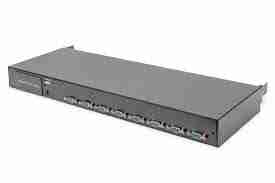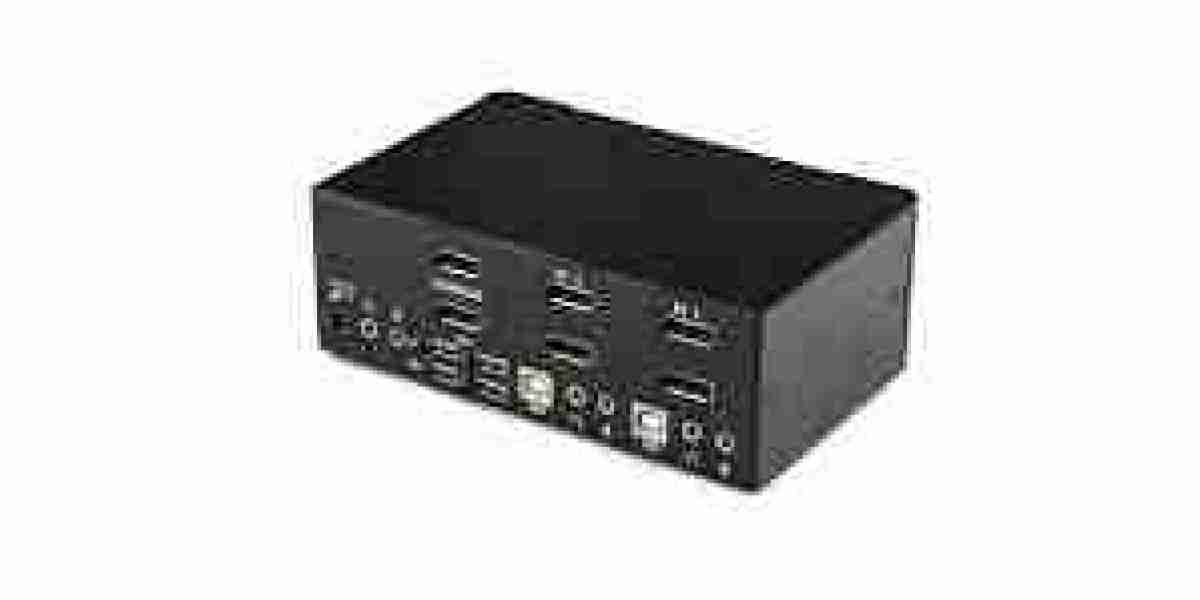The KVM switch market is undergoing notable development due to the rapid digitization of global industries and the growing complexity of IT infrastructures. As enterprises look for smarter ways to manage multiple servers and systems with minimal physical access, KVM (Keyboard, Video, Mouse) switches have emerged as a critical component in achieving efficient and secure device management.

Evolution of KVM Technology
Originally designed for basic switching between computers using a single console, KVM technology has significantly evolved. Modern KVM switches now support digital signals, remote IP-based access, multi-user capabilities, and integration with virtualized environments. These advancements have transformed KVM switches into intelligent management tools that go beyond hardware switching, offering diagnostic, control, and maintenance functionalities in real time.
The development has been particularly strong in IP KVM switches, enabling administrators to access systems remotely over the internet. This innovation is vital in scenarios where on-site access is limited or unfeasible, such as during emergencies or in geographically distributed IT infrastructures.
Demand From Data Centers and Cloud Infrastructure
As businesses increasingly rely on data centers and cloud-based infrastructure, the need for efficient server and network equipment management has surged. KVM switches are integral to controlling these environments securely without requiring physical presence. They allow centralized control, reduce hardware redundancy, and lower operational costs by minimizing the number of monitors, keyboards, and mice required.
The scalability offered by modern KVM switches supports the expansion of hyperscale and colocation data centers. This trend is contributing significantly to the market’s ongoing development, especially in regions like North America, Europe, and parts of Asia-Pacific.
Growth in Remote Work and Decentralized Operations
The global shift toward remote and hybrid work environments has also influenced the development of the KVM switch market. Organizations now require tools that can ensure IT continuity and quick system access for administrators working off-site. KVM-over-IP solutions meet this need by providing secure and responsive access to mission-critical systems from virtually anywhere.
Furthermore, industries with remote or harsh operating conditions—such as oil & gas, manufacturing, and utilities—are increasingly integrating KVM switches into their operations for seamless system control and reduced downtime.
Rising Adoption Across Industry Verticals
The development of the KVM switch market is not limited to traditional IT environments. Verticals such as healthcare, broadcasting, banking, defense, and transportation are adopting KVM technology to simplify control room setups and manage complex, mission-critical applications. In healthcare, for example, digital diagnostic labs and medical imaging centers benefit from high-resolution, low-latency KVM systems to streamline workflows.
In broadcasting, multi-source video control and real-time production requirements have made KVM switches essential for fast switching and secure device access. These applications are diversifying the demand base and pushing vendors to develop more specialized and high-performance solutions.
Product Innovation and Customization
Another strong driver of KVM switch market development is continuous product innovation. Manufacturers are focusing on delivering compact, energy-efficient, and user-friendly switches that can be easily integrated into existing infrastructure. Innovations include:
Multi-display support and extended video resolutions
Power over Ethernet (PoE) capabilities
Web-based configuration interfaces
Modular and stackable switch designs
Enhanced cybersecurity protocols for data protection
Additionally, the growing trend of customized KVM solutions for specific industry needs is contributing to development. Clients can now choose KVM setups tailored to their space, capacity, and security requirements.
Competitive Landscape and Strategic Moves
Key players in the KVM switch market—such as Vertiv, ATEN International, Raritan, Dell Technologies, and Black Box—are investing in product development, strategic alliances, and regional expansion to stay competitive. Many of these companies are targeting high-growth markets in Asia-Pacific and Latin America, where data center construction and digital adoption are accelerating.
These strategic moves are not only expanding market reach but also raising awareness of KVM technology benefits among previously underserved sectors.
Environmental and Energy Efficiency Considerations
As organizations aim for greener IT practices, the demand for energy-efficient equipment, including KVM switches, is rising. By consolidating access and reducing the need for redundant input/output hardware, KVM switches contribute to lower power consumption and reduced heat generation in data centers—an added value for sustainability-conscious enterprises.
Conclusion
The development of the KVM switch market reflects broader shifts in IT management, remote accessibility, and infrastructure modernization. As industries demand more secure, scalable, and flexible solutions to manage increasingly complex systems, KVM switches are adapting through technological innovation and wider application reach. With strong drivers from data center growth, digital transformation, and remote operations, the KVM switch market is set to experience steady and diversified expansion in the years ahead.



